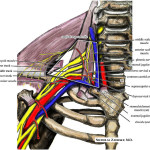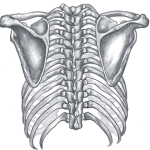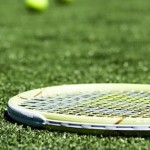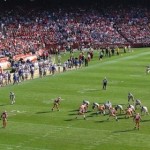Introduction
As I suggested in the previous post: assessment of scapular dyskinesis; sports physiotherapists regularly assess and rehabilitate shoulder dysfunctions and pathologies. As a sports physiotherapists it is important to evaluate the contributing factors to shoulder pathology. A common contributor, seen in 68-100% of shoulder injuries, is scapular dyskinesis. If you treat shoulders, ‘treating the scapula’ is absolutely paramount … ignore it at your own peril. This article will discuss some treatment options for scapular dyskinesis.
A Few General Treatment Caveats
Before reading this post: there are a few ground rules. They are as follows:
- All patients are individuals, and should be treated as such. These suggestions are by no means a recipe.
- Treatment must be based on assessment findings.
- There are many ways to skin a cat, and if you have an effective treatment method not listed that’s great: leave it in the comments below and help us all out!
- You will need to consider what your intervention goals are i.e. improving ‘strength’ versus ‘neuromuscular control’. There are obvious implications for dosages i.e. sets, reps, frequency, weight etc.
- Whilst treating the scapula is important, the type of dyskinesis is not a diagnosis! Accurate diagnosis of the pathology is required to address all components and contributing factors.
Type 1 Dyskinesis
As mentioned in the previous post a common associated finding with type 1 scapular dyskinesis is shortening of the musculature that attaches to the coracoid process. Whilst this is most commonly pectoralis minor, it may also include the short head of biceps or coracobrachialis. Therefore, the mainstay of treatment for type 1 shoulder dyskinesis is improving the length of these muscles (usually pec minor) through use of both releases and stretching. I’ve found two great resources for both of these treatment techniques:
- Great Pec Minor Release Video via Erson Religioso
- Great Pec Minor Stretch Video via Mike Reinold and Chris Johnson (manual technique)
Combining these techniques (which are obviously passive) with some active home options (e.g. self releases and home stretches) will effectively address the contributors to Type 1 Dyskinesis.
Type 2 Dyskinesis
Common findings in Type 2 Scapular Dyskinesis are weaknesses (or poor activation) of the serratus anterior and lower trapezius musculature. Weakness results results in excessive internal rotation and anterior tilt of the scapula and prominence of the medial border (think: winging) (Reinold et al., 2009). Thus, strength and neuromuscular control exercises aimed at improving the function of serratus anterior and lower trapezius are going to bear the most fruit.
Eliciting Serratus Anterior Acitivity
Decker et al (1999) compared common exercises for eliciting serratus anterior activity and found the following exercises produced the greatest EMG signal:
1. Serratus Anterior Punch: this can be enhanced by starting at neutral abduction and extending the elbow whilst simultaneously elevating and protracting the shoulder (Ekstrom et al., 2003).
2. Dynamic Hug
3. Push Up Plus (great video)
Eliciting Lower Trapezius Activity
The lower fibres of trapezius contribute to upward rotation and depression of the scapula and some fibres may also have a role in posterior tilt and external rotation of the scapula in arm elevation (Ludewig et al., 1996). Thus, its role in the reduction of scapular winging is obvious. The following exercises have been shown to elicit high levels of lower trapezius EMG muscle activity (Reinold et al., 2009):
1. Prone Full Can or Y’s
2. Prone Horizontal Abduction in ER
Type 3 Dyskinesis
As suggested in the previous post, type 3 dyskinesis is defined as superior border prominence. Common findings are overactivity in the upper trapezius and decreased activity in the lower trapezius. Thus, type 3 dyskinesis is often characterised by a increase in the strength ratio of upper traps:lower traps (Cools et al., 2007). The clinical implications of this concept is that the most effective exercises should elicit higher levels of lower trapezius activity, whilst minimising upper trapezius activity (Reinold et al., 2009).
1. ER in Neutral
McCabe et al (2007) found that external rotation in neutral to have the best ratio of upper to lower trapezius muscle activity of some common trapezius exercises.
2. Levator Scapulae and Upper Trapezius Stretching: also important when the upper trapezius and levator scapulae have shortened secondary to prolonged overactivity.
Some Other Potentially Helpful Treatments
As I have said previously, this list of exercises and suggestions is by no means exhaustive. Here are a few more treatments that may be helpful for your tricky patients:
- Scapular Mobilisation
- Cervical Mobilisation
- Thoracic Mobilisation
- For some info on treatment for scapular dyskinesis, there is some great info here.
- Please leave your favourite exercises in the comments below.
I would love to know your thoughts! Do you find treating the scapula important, tricky or both? Be sure to let me know in the comments or catch me on Facebook or Twitter
Photo Credit: Jeffrey Beall
References
Cools AM, Dewitte V, Lanszweert F, et al. Rehabilitation of scapular muscle balance: which exercises to prescribe? Am J Sports Med. 2007;35:1744-1751.
Decker MJ, Hintermeister RA, Faber KJ, Hawkins RJ. Serratus anterior muscle activity during selected rehabilitation exercises. Am J Sports Med. 1999;27:784-791.
Ekstrom RA, Donatelli RA, Soderberg GL. Surface electromyographic analysis of exercises for the trapezius and serratus anterior muscles. J Orthop Sports Phys Ther. 2003;33:247-258
Ludewig PM, Cook TM, Nawoczenski DA. Three dimensional scapular orientation and muscle activity at selected positions of humeral elevation. J Orthop Sports Phys Ther. 1996;24:57-65.
McCabe RA. Surface electromyographic analysis of the lower trapezius muscle during exercises performed below ninety degrees of shoulder elevation in healthy subjects. N Am J Sports Phys Ther. 2007;2:34-43.
Reinold MM, Escamilla R, Wilk KE. Current concepts in the scientific and clinical rationale behind exercises for glenohumeral and scapulothoracic musculature. J Orthop Sports Phys Ther 2009; 39(2):105-117.
Related Posts
Comments










Hi,
don t forget the SC-joint and especially the AC-joint.
If they are working in dysfunction while flexion in GH, they will block the scapular movement end of range.
Greetings from Germany, very informative website!
LH
Very nice info here, great read.
But I am wondering if you can help me out with my question.
I have a SLAP tear for nearly two years, doctors say that i do not need surgery as i am not an sports guy. But it appears that I have scapular dyskinesis. Is it OK if I do the scapular stabilisation excercises with out correcting the original SLAP tear.
Please let me know, thanks